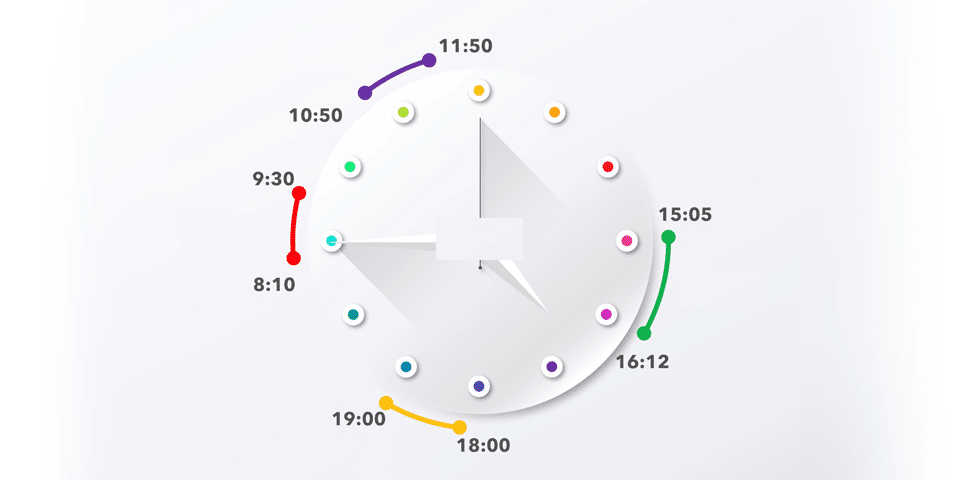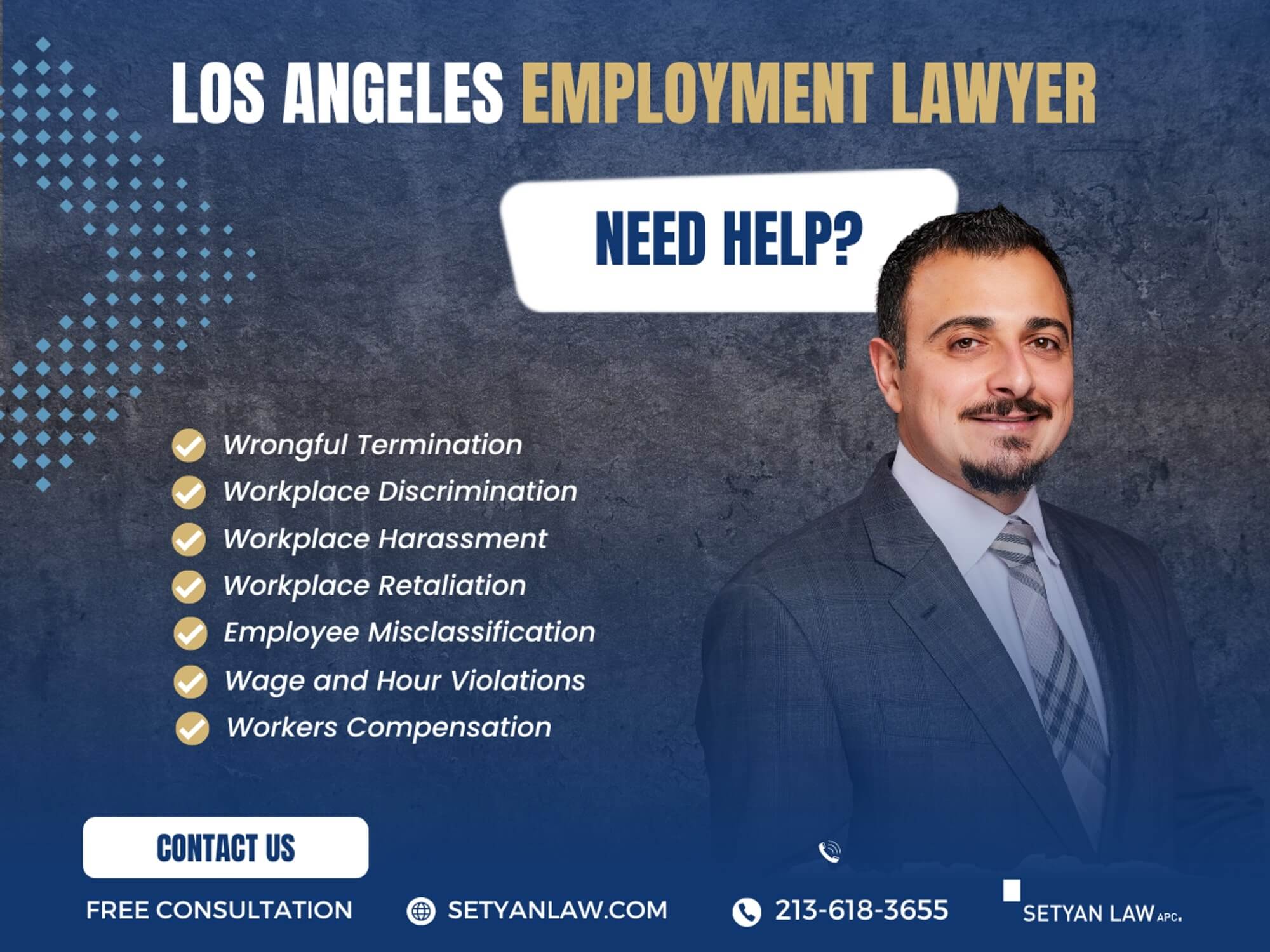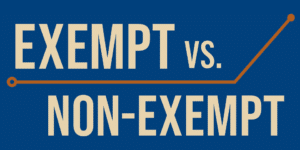Updated July 4, 2025
How to Build a Winning Litigation Timeline: A Step-by-Step Guide
Did you know that a well-constructed litigation timeline can make the difference between winning and losing an employment claim?
When facing workplace disputes, disorganized evidence and confused chronology often lead to failed cases. However, building a comprehensive litigation timeline transforms scattered documents into a powerful legal narrative that judges and juries can easily follow. In fact, employment attorneys consistently rank timeline organization as one of the most critical factors in case preparation.
Evidence doesn't speak for itself—it needs structure and context to tell your story effectively. Whether you're dealing with wrongful termination, discrimination, or wage disputes, a properly sequenced timeline highlights patterns of behavior, establishes key facts, and exposes inconsistencies in your employer's version of events.
For many employees, the thought of organizing case materials feels overwhelming. Consequently, important details get overlooked and crucial connections between events remain hidden. This step-by-step guide will show you exactly how to build a winning litigation timeline that strengthens your position and helps your employment attorney present your case in the most compelling way possible.
Let's break down this process into manageable steps that will transform your employment claim from chaotic to compelling.
Step 1: Understand the Role of a Litigation Timeline
Creating a proper litigation timeline serves as the backbone of successful employment claims. Unlike casual documentation, a strategic timeline becomes a powerful legal tool that can significantly influence case outcomes.
Why timelines matter in employment claims
Employment claims operate under strict time constraints that can make or break your case. According to the U.S. Department of Justice, civil cases typically take one to three years to resolve from initial filing to final verdict [1]. This extended timeframe makes proper documentation essential.
Most employment claims face non-negotiable filing deadlines. The Equal Employment Opportunity Commission (EEOC) requires discrimination charges to be filed within 180 calendar days of the discriminatory event, which extends to 300 days in states with their own anti-discrimination laws [2]. Missing these deadlines can permanently bar your claim regardless of its merit.
A comprehensive timeline serves multiple critical functions:
- Preserves time-sensitive evidence – Documentation created contemporaneously carries more weight than recollections assembled months or years later
- Establishes legal standing – Demonstrating you've met all procedural deadlines prevents dismissal on technical grounds
- Reveals patterns of behavior – Sequential documentation can transform isolated incidents into recognizable patterns of discrimination or retaliation
- Identifies witnesses – Mapping events chronologically helps identify who was present during key interactions
Furthermore, the timeline creation process often reveals previously overlooked connections between events. This strategic advantage allows plaintiffs to prepare their cases thoroughly before defendants even realize litigation is forthcoming [3].
How courts use timelines to assess credibility
Judges and juries rely heavily on timelines to evaluate the truthfulness of competing narratives. A meticulously documented chronology serves as the foundation for credibility assessment throughout the legal process.
Courts examine the logical progression of events within your timeline. Does the sequence make sense? Are there unexplained gaps? The judicial system naturally questions claims where timelines contain illogical jumps or missing periods [4].
Additionally, courts scrutinize the timing between key events. For instance, in retaliation cases, the proximity between protected activities (like filing a discrimination complaint) and adverse employment actions (like termination) can strongly suggest causation [5]. Similarly, employment attorneys analyze the timing of when problematic behavior began compared to when complaints were filed [4].
Documentation timing itself becomes evidence of credibility. Courts give greater weight to contemporaneous records (created at the time of events) versus retrospective accounts. Performance reviews, emails, and HR communications dated before the dispute arose typically carry more persuasive power than documentation created after conflicts emerged [4].
Moreover, courts compare competing timelines from both parties. This side-by-side analysis helps identify inconsistencies in either party's version of events [6]. Employment attorneys frequently create separate timelines for each party's account, then develop a third objective timeline based on verifiable evidence [6].
Ultimately, a well-constructed litigation timeline transforms scattered evidence into a coherent narrative that strengthens your legal position while simultaneously exposing weaknesses in your opponent's case.
Step 2: Gather Key Employment Information
Successful employment claims depend heavily on thorough documentation. Building an effective litigation timeline requires gathering three essential categories of employment information that serve as the foundation for your case.
Employment contracts and offer letters
Employment contracts establish the legal relationship between you and your employer. Initially, locate your written contract, which typically outlines job responsibilities, compensation structure, benefits, termination procedures, and dispute resolution processes. If you have a written employment contract, you generally have up to four years to sue for breach of contract, whereas oral contracts carry a two-year limitation [7].
Importantly, not all workers have formal written agreements. In such cases, piece together evidence of contractual terms through:
- Email communications discussing employment terms
- Offer letters detailing compensation and benefits
- Verbal promises documented in meeting notes
- Company handbooks and policy documents
Employment contracts often contain clauses that directly impact your case, such as arbitration provisions that may limit your right to sue. Your employment attorney will need these documents to assess potential claims and defenses based on contractual obligations.
Performance reviews and disciplinary records
Performance evaluations provide critical evidence in employment disputes, particularly those involving terminations. Despite their value, only 49% of companies conducted annual performance reviews in 2023, down from 82% in 2016 [8].
When gathering performance documents, collect:
- All formal performance evaluations
- Emails providing feedback (positive or negative)
- Commendations, awards, or recognition
- Progressive discipline documentation
- Performance improvement plans
Well-documented evaluations can either support or undermine your case. For employers, performance reviews serve as evidence of inadequate employee performance, knowledge of deficiencies, and proof of fair treatment [8]. Conversely, employees can use positive evaluations to challenge termination decisions. In one notable case, an employee's "meets expectations" evaluation directly contradicted the employer's later claims of "limited skills" and "low productivity," compelling a jury trial on age discrimination [9].
Inconsistencies between performance documentation and termination reasons often raise suspicions of pretext. Courts view subjective criticism with particular skepticism, especially when used to justify termination [10].
Internal complaints and HR correspondence
Documentation of workplace concerns and the employer's response substantially impacts employment claims. Gather all records relating to:
- Formal complaints filed with HR
- Email communications about workplace issues
- Investigation notes and findings
- Meeting summaries addressing concerns
- Company responses to your complaints
Appropriate investigations, when accompanied by prompt remedial action, form an essential part of an employer's risk management program. However, poorly conducted or cursory investigations may actually strengthen an employee's case [11].
Courts expect employers to conduct timely, thorough, and impartial investigations of complaints. Documentation showing the employer failed to follow proper investigation procedures or imposed rigid reporting requirements can provide evidence of wrongdoing [11].
In discrimination and harassment cases, detailed documentation of complaints, investigations, and resolutions becomes vital evidence. Employers must demonstrate they took prompt and appropriate action upon written notice from an employee [12]. This documentation trail helps establish whether the company met its legal obligation to provide a safe work environment.
Step 3: Build a Chronological Timeline of Events
Once you've gathered essential employment documents, constructing a chronological timeline becomes the foundational step in building your case. A properly sequenced litigation timeline transforms scattered evidence into a compelling narrative that strengthens your legal position.
Start with hiring and onboarding
The beginning of your employment relationship provides critical context for any subsequent dispute. Chronologically document:
- Your initial application and interview process
- Date of job offer acceptance and formal start date
- Completion of orientation and training programs
- Initial job responsibilities and reporting structure
This pre-dispute information establishes baseline expectations and working conditions. As one employment attorney notes, "For a plaintiff, the time period between when you know you will file a case and when you actually file the case is extremely important. This gives plaintiff a tremendous tactical advantage" [3].
Onboarding details also help identify key witnesses present during your early employment, including trainers, supervisors, and HR representatives who can potentially corroborate your account of initial conditions.
Include promotions, warnings, and incidents
The middle section of your litigation timeline should comprehensively document career progression and workplace issues:
- Promotions, transfers, and role changes with exact dates
- Performance reviews and feedback (both positive and negative)
- Formal disciplinary actions and warnings
- Internal complaints filed and employer responses
- Significant workplace incidents or policy changes
Organize these events strictly by date, rather than by document type. This fact-centric approach "emphasizes where the focus should be – on the facts themselves, using documents as supporting evidence rather than the primary focus" [13].
Link each timeline entry to specific supporting evidence. For example, a performance review should connect directly to the evaluation document, emails discussing it, and notes from the review meeting. This approach "makes it easier to group relevant documents and evidence under specific facts" [13].
Document termination and post-termination events
The final chronological section covers the separation process and subsequent events:
- Notice of termination and stated reasons
- Exit interview details and participants
- Return of company property documentation
- Unemployment filing and employer response
- Post-termination communications with company
- Application for and receipt of final compensation
Importantly, certain post-termination actions can impact your case. For example, "after-acquired evidence" discovered by employers after termination can potentially limit damages in discrimination cases [14]. Therefore, your timeline must extend beyond your last day of employment.
When constructing your termination timeline, focus primarily on "the date of termination, the reason given by your employer, and any evidence or notes that show the reasons were pretextual or illegitimate" [15]. Include performance reviews and communications that contradict the stated termination reasons.
Employment attorneys advise that "a chronology of relevant incidents that happened during your employment, and in the termination of your employment" serves as essential documentation [16]. This organizational approach helps identify patterns that might otherwise remain hidden and prepares you to effectively communicate your case to legal counsel.
Step 4: Organize Supporting Evidence for Each Event
A well-organized evidence system transforms your litigation timeline from a simple chronology into a powerful legal tool. The strongest employment claims connect each timeline entry with specific documentation that substantiates your narrative.
Link documents to specific timeline entries
Effective litigation timelines establish clear connections between events and supporting evidence. One powerful approach involves creating facts directly from your source documents. Instead of merely citing entire documents, highlight and extract specific sections that support each timeline entry [17]. This patent-pending approach links each fact to the exact portion of evidence that validates it.
When developing your timeline, aim for precision in your references. Rather than citing an entire performance review, link to the specific page or paragraph that supports your claim [18]. This meticulous cross-referencing strengthens your position and eliminates ambiguity.
Specialized timeline software offers significant advantages in this process. Quality chronology tools allow you to:
- Create events directly from documents during review
- Highlight relevant text to add as timeline entries
- Automatically link events to source documents [19]
This fact-centric approach makes it considerably easier to group relevant documents under specific incidents. For instance, a quarterly safety report might identify several incidents, each with additional supporting documentation [13].
Use witness statements to support key claims
Witness statements provide crucial third-party validation of your claims. In employment disputes, cases often come down to credibility assessments between conflicting accounts. A neutral witness with nothing to gain from the litigation significantly strengthens your position [20].
Notably, witnesses are frequently perceived as more believable precisely because they have no financial stake in the outcome. In fact, they may risk workplace relationships by providing statements [21]. This perceived objectivity makes their testimony particularly valuable in supporting employment claims.
Consider this practical example: if a manager claims an employee was terminated for poor performance, but a coworker witnesses the manager stating they should fire anyone over 50, this testimony provides powerful evidence of age discrimination [21].
Preserve digital and physical evidence
Proper evidence preservation is fundamental to maintaining case integrity. Above all, evidence must meet the test of admissibility by being authentic, relevant, unaltered, and untampered with [22].
For physical evidence, maintain a clear chain of custody by documenting:
- Who provided the materials
- When they were obtained
- Who has accessed them
- Where they have been stored [22]
Digital evidence presents unique preservation challenges. If your employer has automatic deletion policies for emails or other electronic documents, you must institute an electronic litigation hold [5]. Remember that simply printing electronic documents is insufficient, as metadata might contain crucial information that disappears in hard copies [5].
Subsequently, thoroughly document all aspects of evidence collection. Your ability to testify under oath about document authenticity and handling can prove decisive in employment litigation [22].
Step 5: Use the Timeline to Strengthen Your Legal Strategy
A properly constructed litigation timeline becomes your strategic compass throughout the legal process. After organizing your evidence chronologically, your timeline shifts from a passive record to an active tool that shapes your legal approach.
Identify legal claims and defenses
Your litigation timeline forms the foundation for identifying viable legal claims. The sequence of events is critical to proving discrimination, harassment, retaliation, and wrongful termination cases [23]. By examining your timeline, you can pinpoint specific incidents that establish the elements of each potential claim.
Accordingly, your attorney can assess which legal theories are strongest based on the documented chronology. For discrimination claims, the timeline helps establish whether adverse actions occurred shortly after protected activities, suggesting causation. First, identify patterns that reveal potential violations, then match those patterns with corresponding legal remedies.
Spot inconsistencies or gaps in the employer's story
Thorough timelines expose weaknesses in the employer's narrative. Consider these strategic applications:
- Compare stated termination reasons against documented performance reviews
- Identify post-hoc justifications that weren't mentioned during termination
- Highlight favorable treatment of similarly situated employees
Undoubtedly, these inconsistencies can transform your case. In one notable instance, an employee's "meets expectations" evaluation directly contradicted the employer's later claims of "limited skills," compelling a jury trial on age discrimination.
Prepare for mediation, deposition, or trial
Your timeline serves as a roadmap throughout all stages of litigation. For mediation, it helps summarize key events concisely while highlighting the strength of your evidence [24]. Prior to depositions, review your timeline to identify critical events requiring testimony [25].
In trial preparation, your litigation timeline becomes even more valuable. It helps organize opening statements, plan witness examinations, and develop visual aids that illustrate key events chronologically [26]. Second, timelines help attorneys maintain consistent case theories across all trial phases.
Throughout this process, remember that your timeline isn't static—continuously update it as new facts and documents emerge [23]. This evolving chronology will form the foundation for your factual allegations in complaints and court pleadings.
Conclusion
Building an effective litigation timeline transforms scattered employment documents into a powerful legal narrative that can significantly impact your case outcome. Throughout this guide, we've outlined a systematic approach that converts chaotic information into compelling evidence.
Timelines serve as the backbone of successful employment claims. They preserve critical evidence, establish patterns of behavior, and help meet procedural deadlines that might otherwise bar legitimate claims. Additionally, courts rely heavily on these chronological accounts when assessing credibility and determining the merits of your case.
Gathering comprehensive documentation stands as a crucial step in this process. Employment contracts, performance reviews, and internal complaints provide the foundation upon which your timeline builds. These documents tell your story far more effectively than memory alone, especially when properly organized and linked to specific events.
The chronological arrangement of events reveals patterns that might otherwise remain hidden. From hiring through termination and beyond, each documented incident contributes to a larger narrative that strengthens your legal position. Consequently, this organization exposes inconsistencies in your employer's account while highlighting the validity of your claims.
Evidence preservation and proper linking further solidify your timeline's effectiveness. Physical documents, digital records, and witness statements must maintain their integrity throughout the legal process. This meticulous approach ensures your evidence remains admissible and persuasive.
Perhaps most importantly, your completed timeline becomes an active strategic tool rather than a passive record. It helps identify viable legal claims, exposes weaknesses in your employer's story, and guides your attorney through every stage of litigation from initial filing through trial.
Remember, judges and juries don't simply evaluate isolated incidents—they assess the entire sequence of events to determine whether employment laws were violated. Therefore, a well-constructed timeline can make the difference between winning and losing your case.
Start building your litigation timeline early, update it regularly as new information emerges, and work closely with your employment attorney to leverage this powerful tool effectively. Your diligence in timeline construction might ultimately determine whether justice prevails in your employment claim.
References
[1] – https://statelawfirm.com/post/litigation-timeline/
[2] – https://www.eeoc.gov/time-limits-filing-charge
[3] – https://www.charlotteemploymentlawyers.com/timeline-of-an-employment-case/
[4] – https://www.hracuity.com/blog/assessing-credibility-in-workplace-investigations/
[5] – https://guardianhr.com/dont-lose-a-lawsuit-before-its-filed-preserve-evidence/
[6] – https://converus.com/6-credibility-assessment-strategies-for-workplace-investigations/
[7] – https://setyanlaw.com/statute-of-limitations-employment-law-case-california/
[8] – https://legal.thomsonreuters.com/en/insights/articles/what-legal-benefits-do-performance-reviews-offer
[9] – https://www.mcafeetaft.com/evaluations-employee-performance-reviews-and-pretext-a-hard-lesson-from-the-tenth-circuit/
[10] – https://www.hrdefenseblog.com/2018/07/a-shield-or-a-sword-the-role-of-performance-evaluations-in-employment-litigation/
[11] – https://shawlawgroup.com/2016/01/internal-investigations-avoiding-common-pitfalls/
[12] – https://kirksimas.com/the-importance-of-properly-documenting-personnel-records/
[13] – https://csdisco.com/blog/fact-based-legal-timelines
[14] – https://scholarship.kentlaw.iit.edu/cgi/viewcontent.cgi?article=4024&context=cklawreview
[15] – https://www.justanswer.com/employment-law/p8mrw-timeline-attorneys-preparing-timeline.html
[16] – https://www.chicago-employmentlawyer.com/top-tips-for-how-to-get-the-most-severance/write-a-chronology-of-relevant-incidents-statements/
[17] – https://www.casefleet.com/timelines-case-timeline-software
[18] – https://safelinkhub.com/blog/better-case-chronologies-and-timelines
[19] – https://www.opus2.com/en-us/case-chronology-software/
[20] – https://www.plblaw.com/witness-statements-can-be-essential-in-an-employment-law-case-learn-how-they-can-be-used/
[21] – https://www.plblaw.com/discover-how-witness-statements-can-be-used-in-employment-law-cases/
[22] – https://www.dol.gov/agencies/ebsa/about-ebsa/our-activities/enforcement/oe-manual/collection-and-preservation-of-evidence
[23] – https://www.advocatemagazine.com/article/2023-march/pre-litigation-investigation-strategies-in-single-plaintiff-employment-cases
[24] – https://bostonbar.org/journal/how-to-prepare-for-a-mediation/
[25] – https://ruggleslawfirm.com/employment-lawsuit-deposition-how-to-succeed/
[26] – https://www.clio.com/blog/trial-preparation-checklist/
Call Setyan Law at (213)-618-3655 to schedule a free consultation.






